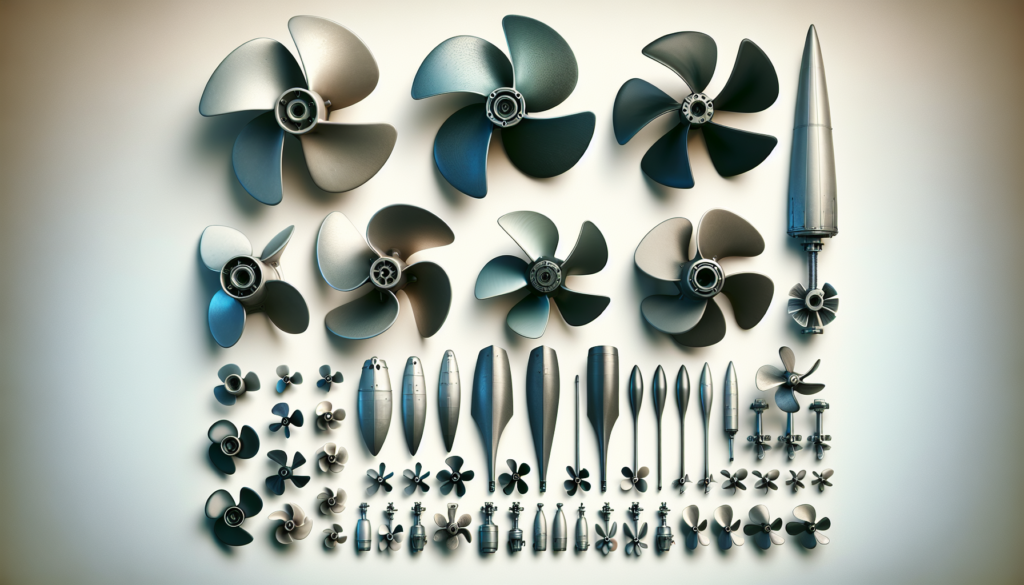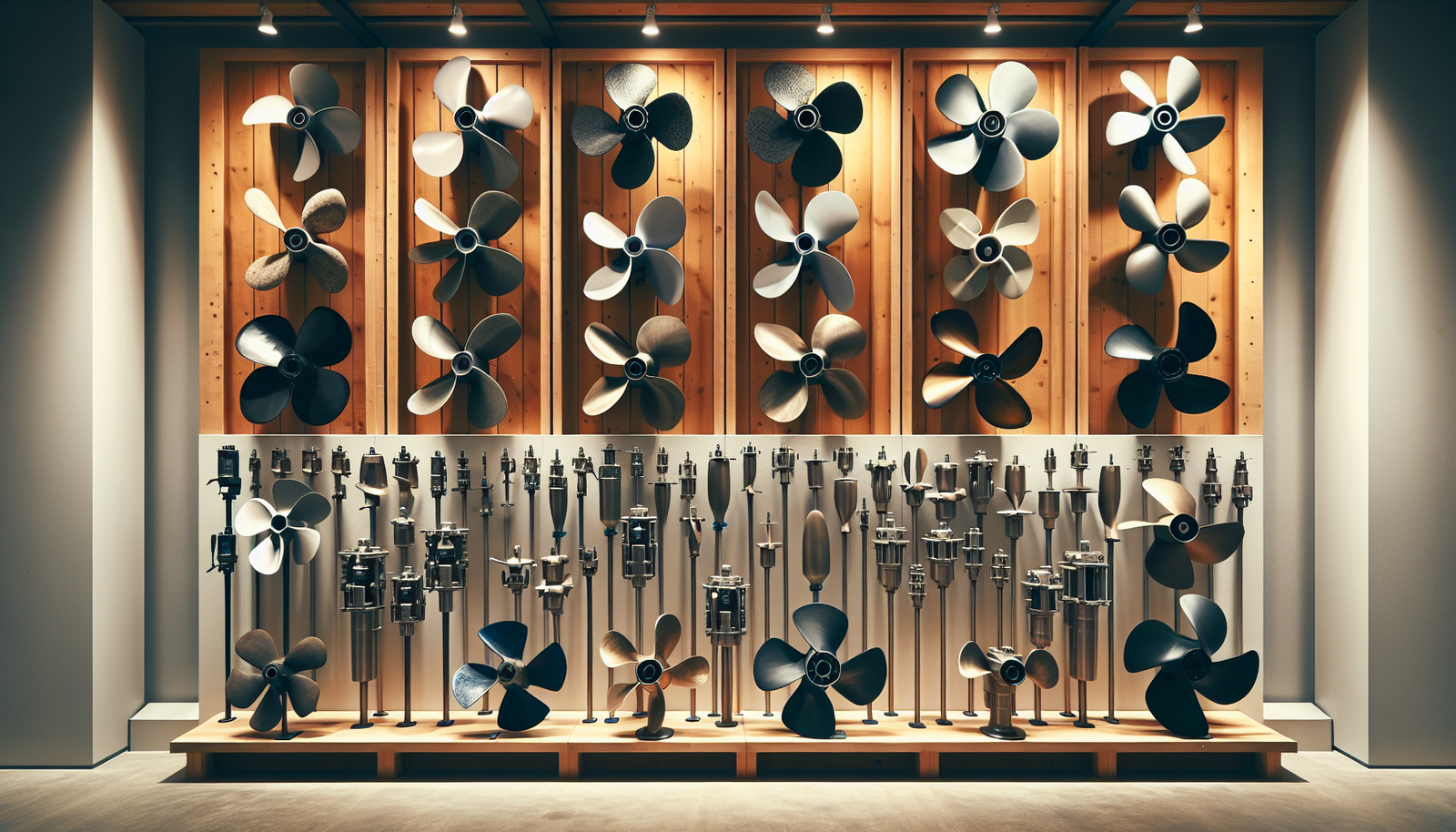Navigating the intricate world of boat propellers can be an overwhelming venture, and making the right choice plays a crucial role in your vessel’s functionality and versatility. Picture this, you’re out in the open water, buffered by gentle waves and a beckoning horizon with your boat, perfectly outfitted with an engine propeller that guarantees swift maneuverability and efficient energy use. Reading “How To Choose The Right Propeller For Your Specific Boat Engine” is your compass to understanding the nuts and bolts of boat propellers, from pinpointing key factors that influence your choice, understanding compatibility with your boat’s engine, to even narrowing down your options within different propeller designs. It’s high time you took the helm confidently with this enriching guide.

Understanding the Importance of the Right Propeller
choosing the right propeller for your boat is pivotal for optimizing its performance. It’s not only about how your boat moves, but also about the efficiency, fuel usage, and overall engine health.
Role of a propeller in a boat
The primary function of a boat propeller is to convert the engine’s horsepower into thrust, which propels the boat forward. The entire performance of the boat, be it acceleration or speed, is significantly influenced by the choice of the propeller. Therefore, understanding your boat and engine specifications are essential when choosing a propeller.
Effects of the wrong propeller
Similarly, using a wrong propeller can have detrimental effects. The wrong size or type can cause the engine to overheat, as it needs to work harder. It could also lead to a significant decrease in your boat’s performance – think decreased top speed, poor hole-shot acceleration, and inefficient fuel consumption. Ultimately, the wrong propeller just forces your boat and engine to work harder than they need to.
Efficiency improvement with the right propeller
Conversely, with the right propeller, your boat’s efficiency can improve drastically. The correct propeller can provide the right amount of needed acceleration, a fuel-efficient cruise speed, and an optimal top speed. It’ll also limit unnecessary strain on the engine, promoting a longer engine life, thus saving you from costly future repairs.
Fundamentals of Propeller Anatomy
Understanding the basics of propeller anatomy is essential in choosing the right propeller for your boat. These include propeller blades, diameter & pitch, hub system, and propeller material and size.
Propeller blades
Each blade on a propeller works to capture and release water. The angle and design can affect the speed and efficiency of the boat. More blades generally lead to a smoother ride but can also cause more drag, affecting top speed.
Diameter & Pitch
Diameter and pitch are two key specs when choosing a prop. Diameter is twice the distance from the center of the hub to the tip of any blade. Pitch refers to the forward movement a propeller makes in one revolution. Deciding on the right diameter and pitch requires considering your boat’s size, weight, and the purpose for which it’s used.
Hub system
The hub system, often overlooked, is also essential in the propeller selection. It serves as a shock absorber, protecting the engine’s drive train.
Propeller material and size
Propellers come in a range of materials, with aluminum and stainless steel being most common. The choice of material will influence the propeller’s strength, cost, performance, and lifespan. Similarly, propeller size affects the acceleration and top speed of your boat.
Knowing Your Boat Engine Specifications
understanding your boat engine specifications is crucial while selecting a propeller. Consider factors such as engine make and model, horsepower output, RPM range, and fuel efficiency.
Engine make and model
The type of engine on your boat will affect the type of propeller you need. Some propellers are specifically designed to work with certain engines.
Horsepower output
Horsepower output relates to your propeller’s size and pitch. Greater horsepower requires larger and higher-pitch propellers.
RPM range
The RPM range at wide-open throttle (WOT) is a primary consideration when selecting a propeller. Too high or too low can cause engine damage or reduce optimal performance.
Fuel efficiency
The efficiency of your engine’s fuel consumption can be influenced by the propeller. The right propeller choice results in better fuel economy.

Types of Boat Propellers
The type of boat propeller you choose will depend on your boat’s size, engine specifications, and intended use. Propellers come in different types – from three-blade to five-blade ones, as well as stainless steel and aluminum propellers.
Three-blade propellers
Three-blade propellers are the most common and known for their speed and efficiency in calm water conditions.
Four-blade propellers
Four-blade propellers provide better acceleration and improved handling, especially when carrying heavy loads or running at high speeds. These are suitable for rougher water conditions.
Five-blade propellers
Five-blade propellers are best for high-performance boats needing extra thrust for fast acceleration. They also provide better handling and stability.
Stainless steel propellers
Stainless steel propellers are strong, durable, and excellent for high-performance boats. Though costly, they offer enhanced acceleration and top speed.
Aluminum propellers
Aluminum propellers are softer, lighter, and less expensive than stainless steel. They get easily damaged, but are excellent for lower speed applications and are easier to replace when damaged.
Understanding Propeller Size and Its Impact
Understanding how propeller size is determined and its effect on speed, maneuverability, and relation with engine power is critical in propeller selection.
How size is determined
Propeller size is generally expressed as diameter x pitch. The size required largely depends on the size, weight, and application of the boat, along with engine specifications.
Effect of propeller size on speed and maneuverability
The larger the propeller in size, the more water it can push for each rotation leading to an increase in speed and acceleration. On the other hand, it may reduce maneuverability and put extra load on the engine.
Relation between size and engine power
High-powered engines often require larger propellers to make full use of the engine’s output. However, a too large propeller can overload the engine and may cause damage.
Pitch and Its Role in Propeller Performance
Pitch, a fundamental aspect of propeller selection, plays a key role in your boat’s speed and handling.
Definition of pitch
Pitch refers to how far a propeller would move forward in a perfect fluid during one full rotation. For example, a 20-pitch propeller would move forward 20 inches with each rotation.
How pitch affects speed and handling
Lower pitch propellers make the boat plane at lower speeds and provide better hole-shot acceleration, but lower top speed. Higher pitch propellers do the opposite – they decrease acceleration but increase top speed.
Choosing the right pitch for your engine
It’s important to find the right balance. You want a propeller that provides good hole-shot acceleration and fuel efficiency at cruising speed, while still reaching the top of the engine’s RPM range at wide-open throttle.
The Role of Gear Ratio in Prop Selection
Gear ratio affects how many times the propeller turns for each engine revolution.
Understanding gear ratio
It’s the ratio between the drive gear (attached to the engine’s crankshaft) and the driven gear (which turns the prop shaft). If the gear ratio is 2:1, for every two revolutions of the crankshaft, the propeller makes one revolution.
Calculating gear ratio
Gear ratio is calculated by dividing the number of teeth on the drive gear by the number of teeth on the driven gear.
Impacts of gear ratio on propeller performance
A lower gear ratio (like 1.5:1) provides more speed but less torque, while a higher gear ratio (like 2.5:1) provides less speed but more torque. It’s important to match the propeller size and pitch to the engine’s gear ratio to get the best performance.
Choosing Propellers Based on Boat Type
Different types of boats need different types of propellers. Whether you have a speed boat, a sailboat, a fishing boat, or a pontoon, you need a propeller that’s best suited to your specific type of boat.
Propellers for speed boats
Speed boats generally need high-speed propellers, typically with a higher pitch for maximum speed.
Propellers for sailboats
Sailboats require efficient and reliable propellers. Folding or feathering propellers are popular choices as they reduce drag when under sail.
Propellers for fishing boats
Fishing boats that require trolling or low-speed control usually need different propellers than those used for high-speed fishing boats.
Propellers for pontoons
Pontoons, being heavy and often carrying large loads, usually need four or five-blade propellers with a larger diameter for better hole-shot and cruising performance.
Factors Affecting the Performance of the Propeller
Various factors influence the performance of the propeller including boat load, water conditions, and boat usage.
Boat load
A heavily loaded boat requires more power to get on plane, so you may need a lower pitch propeller.
Water conditions
In rough water, a four or five-blade propeller may improve handling and reduce ventilation or prop slip.
Boat usage (racing, towing, cruising, etc.)
The type of usage also drastically influences propeller choice. A boat used for water sports might need a different propeller than a boat used primarily for cruising.
Maintaining and Replacing Boat Propellers
A well-maintained propeller ensures optimal boat performance. Regular inspection, identifying signs of wear and tear, knowing when to replace, and safety while handling propellers should be given importance.
Regular prop inspection
Regular check-ups can help identify issues early on. Look for nicks, dings, or bends on the blades. Even small deformities can affect performance.
Signs of wear and tear
Signs like vibration, poor fuel economy, inability to reach full RPM, or decreased speed indicate it’s time for a replacement.
When to replace your propeller
It’s best to replace a propeller if it is severely damaged. Small repairs may be possible but heavily damaged or old propellers should be replaced.
Safety aspects while handling propellers
Always ensure safety while handling propellers – they can be heavy and sharp. Use a prop wrench for installation or removal, and always keep the engine off while working on the propeller.
In conclusion, the best propeller for your boat depends on several factors. By understanding all these aspects, you can make an informed decision and optimise your boat’s performance. Happy Boating!


[…] the right propeller for your boat plays into achieving the maximum horsepower output. You should consider factors like propeller […]